By Angus Dalton
Examine, a free weekly newsletter covering science with a sceptical, evidence-based eye, is sent every Tuesday. You’re reading an excerpt – sign up to get the whole newsletter in your inbox.
It’s the most basic of medical matters: how do you heal a wound?
You might think modern science has the problem all sewn up, but the global burden of chronic wounds is estimated at $250 billion. At any one time, 420,000 Australians are nursing such a wound that refuses to heal quickly.
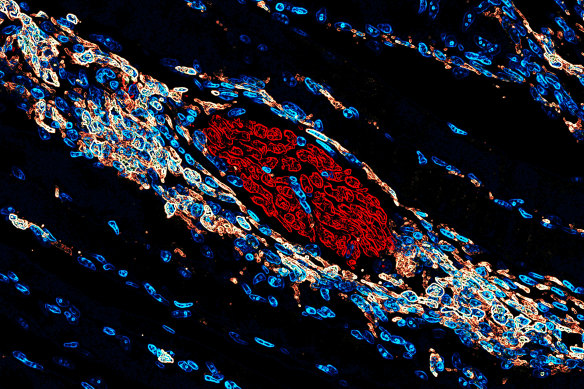
Sensory neurons growing into an injured muscle release a key peptide scientists are trying to harness to boost the body’s wound-healing capabilities.Credit: Associate Professor Mikaël Martino
People with diabetes often suffer stubborn foot ulcers, for example, and all of us struggle to repair cuts and grazes as we age. The mpox emergency has underlined the dangers of open sores as the virus spreads through infectious lesions.
On their quest to better heal cuts, lesions, withered muscle and busted tissue, scientists have turned to a strange kind of alchemy – they’ve created high-tech new salves by blasting algae with plasma and boiling silk spun by caterpillars.
They’re hoping that one day, we get so good at healing wounds that we will be able to repair tissue that doesn’t typically regenerate, including that of the heart and brain.
But first, let’s turn to zebrafish, which have some killer party tricks scientists are desperate to borrow.
Two molecules that turbocharge tissue repair
Professor Peter Currie is the director of research at Monash University’s Australian Regenerative Medicine Institute, and he’s taken the zebrafish as his lifelong muse.
The little fish has the extraordinary ability to regenerate tissues humans can’t: they can regrow fins and revamp their hearts, retinas and spinal cords.
In 2021, Currie found a molecule at play in the fish called NAMPT that sends stem cells within muscles into “hyperdrive”, triggering broken tissue to stitch back together.
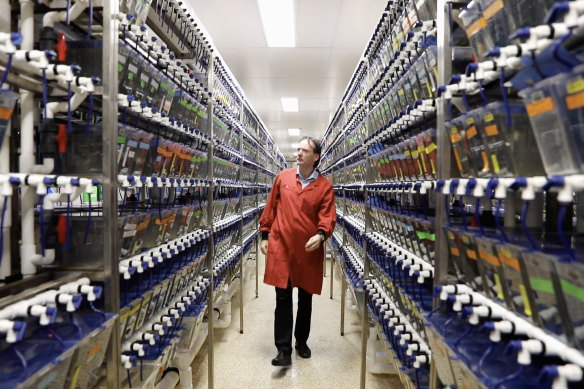
Peter Currie in the zebrafish lab at Monash University.Credit: Australian Regenerative Medicine Institute / Supplied
When Currie applied NAMPT as a paste to wounds on mice, they healed super quickly. He’s spun that discovery into a start-up and is raising funds to run a human trial, with the eventual goal of using NAMPT to reverse muscular dystrophy.
More recently, another scientist at the institute, Associate Professor Mikaël Martino, identified a molecule that closed up wounds 2.5 faster than normal and regenerated 1.6 times more muscle.
The research hinged on the new understanding that sensory neurons that detect pain also play a crucial role in triggering the regeneration of damaged tissue, Currie explains.
“These neurons enter into the wound site, and they tell your brain that things aren’t going so well – they’re pain receptors,” he says.
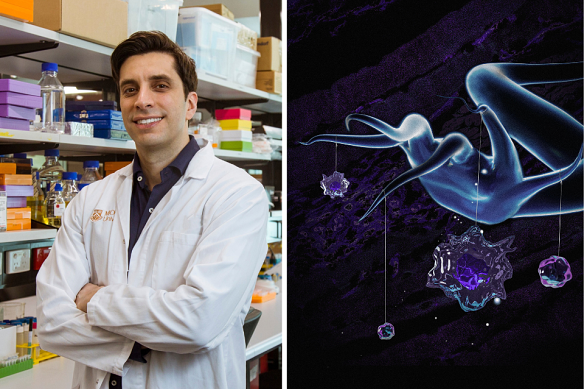
Associate Professor Mikaël Martino and an artistic representation of the “puppet master” sensory neurons controlling the immune system and tissue repair.Credit: Australian Regenerative Medicine Institute
“But what Mikaël found was really remarkable – they actually secrete a particular molecule from the neurons that creates a very pro-regenerative environment in the wound.”
This molecule – calcitonin gene-related peptide, or CGRP – instructs immune cells to begin repairing tissue. Researchers once regarded these immune cells as “dump trucks” that flood the site of an injury, clean things up, and then scurry away so the tissue can start to fix itself up.
Now we know these immune cells are critical to the regenerative response itself, Currie says. And with molecules such as CGRP, we can use them to our advantage.
“You can take this peptide and inject it into chronic wounds, like a diabetic ulcer, and it stimulates a response so the wound can resolve. So it’s tackling some big, intractable problems in the wound healing field.”
Mending heart tissue – with caterpillar silk
But if we want to use these magic molecules and other promising therapies in the body to patch up broken organs, there’s a problem – they break down quickly, sometimes within hours.
Enter the engineers, who are working with biologists to create the scaffolding that can deliver such therapies and keep them active in the body.
Associate Professor Jelena Rnjak-Kovacina, a bioengineer from the University of NSW, for example, is working on using silk from silkworm cocoons to repair damaged heart tissue, which doesn’t regenerate by itself.
Silk is both malleable and as strong as Kevlar, the synthetic fibre used in bullet-proof vests. You can craft it into soft and spongy beads or a screw strong enough to drill through bone, Rnjak-Kovacina says.
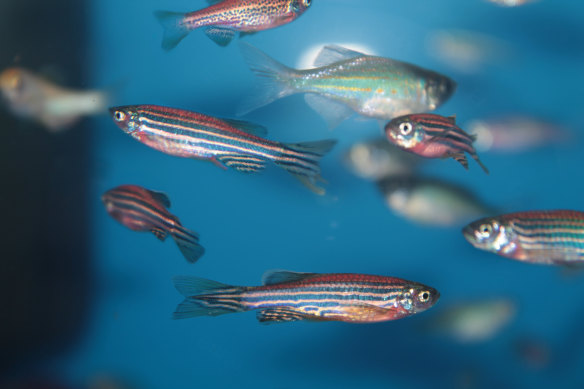
Zebrafish: the unassuming aquarium dwellers that can regrow hearts, fins and spinal cords.Credit: iStock
But her recent research has revolved around boiling the silk and treating it with light so it becomes a “microgel”. The jelly-like substance facilitates tissue growth.
“It kind of provides the cues that tell the cells where to go and where to make new tissue,” Rnjak-Kovacina says.
“Silk is a protein, so our body can actually recognise it, and then it can degrade it. It can be, over time, replaced with your native tissue. That’s the goal behind our research.”
The microgel can also be loaded up with drugs, growth factors, and perhaps, one day, regenerative molecules of the kind discovered by Currie and Martino.
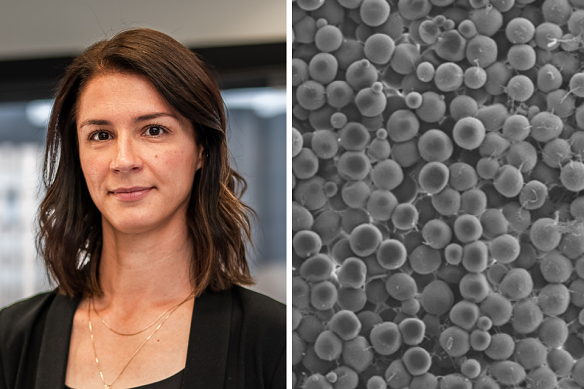
Associate Professor Jelena Rnjak-Kovacina and her silk microgel under the microscope.Credit: Dr Jelena Rnjak-Kovacina/UNSW
“It’s a twofold thing, right? We’re trying to provide those physical cues that guide tissues as well as kind of load the material with those chemical cues that tell the cells what to do,” Rnjak-Kovacina says.
Along with her heart research, Rnjak-Kovacina is also testing the microgel’s use as a treatment for skin wounds and burns.
Plasma-blasted algae puts Band-Aids to shame
There’s one more Australian invention putting Band-Aids to shame. Flinders University researchers recently patented a new ultra-thin bioactive coating they say could also fix chronic wounds and speed up healing.
The coating is made by blasting Spirulina maxima – the blue-green microalgae at home in a lemongrass health shot – with a jet of argon plasma.
The plasma (a superheated mixture of electrons and ions) strips away the algae’s cell walls, creating a one-of-a-kind microbe-repelling, anti-inflammatory wound coating.
It’s a realm of research in which Australia sits at the forefront, Currie says.
“It’s important to illustrate that people are attracted to this country to do high-quality science like this, which is world-leading,” he says of Martino’s sensory neuron discovery. “I think that’s a real success story.”
Examine, a free weekly newsletter covering science with a sceptical, evidence-based eye, is sent every Tuesday. You’re reading an excerpt – sign up to get the whole newsletter in your inbox.